海賊キャプテン・キッドの財宝発見か、マダガスカル沖
2015年05月08日 07:41 発信地:サント・マリー/マダガスカル
科学・技術
海賊キャプテン・キッドの財宝発見か、マダガスカル沖
写真拡大×マダガスカルのサント・マリー島で、同島の沖合で海賊キャプテン・キッドのものとみられる沈没船から発見された50キロの銀の延べ棒(2015年5月7日撮影)。(c)AFP/MANJAKAHERY TSIRESENA 【メディア・報道関係・法人の方】写真購入のお問合せはこちら
関連写真
海賊キャプテン・キッドの財宝発見か、マダガスカル沖
【5月8日 AFP】米探検家らのチームが7日、マダガスカル沖の沈没船の中から、17世紀のスコットランド(Scotland)出身の海賊ウィリアム・キッド(William Kidd)、通称キャプテン・キッド(Captain Kidd)のものとされる銀の延べ棒を発見したと発表した。
海洋考古学者のバリー・クリフォード(Barry Clifford)氏は記者会見で、サント・マリー(Sainte Marie)島に近い海域でキャプテン・キッドが乗っていた「アドベンチャー・ギャリー(Adventure Galley)号」とみられる沈没船を発見し、その中から50キロの銀の延べ棒が見つかったと発表した。
キャプテン・キッドは1645年ごろスコットランドに生まれ、当初は英当局から海賊退治役として雇われていたが、後に自ら冷血な海賊になった。1698年に高価な貨物を積んだ船を襲って略奪行為に及んだことから拘束されて囚人となり、英議会からの尋問を受けた後、テムズ川(River Thames)に近いワッピング(Wapping)で1701年に処刑された。
しかしその強奪品の多くの行方については謎のままとなっており、何世代にもわたって財宝発見を目指す人々の好奇心をかき立て、興奮をもたらしてきた。
クリフォード氏が海底から銀の塊を拾い上げる様子は、ドキュメンタリー取材班が撮影していた。同氏はその延べ棒をサントマリー島で7日、ヘリー・ラジャオナリマンピアニナ(Hery Rajaonarimampianina)マダガスカル大統領に手渡した。
クリフォード氏は、「13隻の船を発見した。そのうちの2隻について、これまで10週間にわたって調査を続けてきた」「1隻は『ファイヤー・ドラゴン(Fire Dragon)号』で、もう1隻がキャプテン・キッドの船『アドベンチャー・ギャリー号』だ」と述べた。
財宝探しに同行した英番組制作会社のオクトーバー・フィルムズ(October Films)はより慎重な立場をとり、発見された銀の延べ棒は、キャプテン・キッドにゆかりのある他の延べ棒に似ており、年代も合致しているが、「予備調査の結果を確認するためには、さらなる分析が必要になるだろう」という見方を示している。
一方、国連教育科学文化機関(ユネスコ、UNESCO)は直ちに、財宝探しのために貴重な遺跡を損傷した恐れもあるとして、クリフォード氏の財宝探しの手法を批判した。(c)AFP/Manjakahery Tsiresena
再生核研究所声明152(2014.3.21) 研究活動に現れた注目すべき現象、研究の現場
今回、100/0=0,0/0=0の発見と研究活動で いわば、研究のライブの状況が明瞭に現われたので、研究の現場の状況として纏めてみたい。多くはメールや文書で 時刻入れで 文書が保管されている。一般的に注目すべきことはゴシック体で記そう。
まず、発見現場であるが、偶然に 印刷された原稿を見て発見したと言うことである。思いがけないことに、気づいたということである。言われてみれば、当たり前のことで、気付かない方がおかしく、馬鹿みたいなことになるだろう。たわいもないものの類である。しかし、結果が尋常ではないので、大事だと 説明されても、原稿を見せても そんなものは駄目、全然価値が無いと結構多くの人が大きな批判を寄せてきたのは 大いに注目に値する。わざわざ複数の外国からメールがいわば上司にきて、批判して、研究内容について意見を求めるメールさえ するのを禁じられた程である。予断と偏見によるもの、が大部分であると判断できる。それから 価値観に本質的な違いがあること を露わに実感した。原稿を見て、これは 面白いと捉えて 研究を発展させて素晴しい論文を書かれた者がいる一方 そんなの 駄目だ で、ただ批判して傍観している者。これは 研究者の素養として、能力として極めて大きな問題ではないだろうか。研究内容の、良い、悪いが判断できない、興味、関心が無い。愛が無ければ見えない、進まないは 基本では? 研究において、最も大事なのは、愛が有るか、関心が有るか、価値を認められるか、好奇心が有るかではないだろうか。 これらが無ければ、幾ら宝のようなものに出会っても、探し出せないのではないだろうか。あることに 高い価値を見出し、情熱的に追及して行く精神は、研究者としての素養として大事ではないだろうか。良いか、悪いか評価できなければ、判断出来なければ、唯 夢中で何かの延長を 他を意識して進めるだけになってしまう。良いものを 良いと評価できる能力は、理解力、解決力、創造力などと共に大事な能力ではないだろうか。場合によっては、人格の高潔さにも依存する要素も多い。意図的に無視するは 世に多いからである。
それから、新しい考え、発想が無意識の内に湧いてくる ものであるという、事実である。目を覚ましたら解けていた、新しい考えで 突然目を覚ましたと繰り返して書いてきた。それから、それらは精神状態によるのであるが、コーヒー、茶、特にジャスミン茶で 大いに興奮して、どんどん考えが湧いて来るのを実感した。結構、そのようなものの影響も無視できない。
それから研究活動で大事な要素は 積極性である。今回、多くの人が 研究に参加されたが、意外な人が 意外な才能を発揮して、意外な視点を 指摘され、発展させてくれたという顕著な事実である。全然興味を懐かないような人でも 話すと興味を示し、大きな貢献をしてくれた。現在のように忙しく、論文を送られてきても読む暇も、関わる余裕も無いは 世に多い現象であるが、直接話すと 本質を理解されて、興味を懐くは 世に多い。直接交流の重要性を指摘しておきたい。メールなどでも、交信からいろいろな刺激を受け、考えが湧く素に成るのは多い、精神が鼓舞される場面も多い。それから、凄い発見を事実上していても、理解が難しい、あるいは批判を恐れて 追求を諦めてしまう、主張を避けて諦めてしまうのは 世に多いのではないかとも感じられる。良いものを発見しても、認められるまで、努力するのは そう簡単なことではないように感じられる。
最後に 研究の最も大事な心を 2014.3.11ブログに書いた記事を編集して記して置こう:
特異点解明の歩み100/0=0,0/0=0:関係者: 独断と偏見、人類の知能
ふと思い浮かんだ: 天才少年の質問(再生核研究所声明 9: 天才教育の必要性を訴える ):
0.999…. = 1 の意味は、何か
当時8歳の少年でした。私は だれをも納得させる明快な解答を与えたが、相当な、国内外の相当な数学者に尋ねたが これまで誰からも満足する解答を得なかった。これは 知識で、学んでいて 理解が薄っぺらなことを言っているのではないだろうか。少しも、真智を求めては来なかった:
― 哲学とは 真智への愛 であり、真智とは 神の意志 のことである。哲学することは、人間の本能であり、それは 神の意志 であると考えられる。愛の定義は 声明146で与えられ、神の定義は 声明122と132で与えられている。― 再生核研究所声明148.(もっとも何でも は 究められない)
それ故に、ゼロで割る考えが 思い浮かばなかったのでは。人類の知能は その程度である。真智を求めている者は 世に稀であり、多くは断片的な世界に閉じこもり、埋没し、自己さえ見失っている。また、日常生活に埋没していると言える。
以 上
Announcement 179: Division by zero is clear as z/0=0 and it is fundamental in mathematics
\documentclass[12pt]{article}
\usepackage{latexsym,amsmath,amssymb,amsfonts,amstext,amsthm}
\numberwithin{equation}{section}
\begin{document}
\title{\bf Announcement 179: Division by zero is clear as z/0=0 and it is fundamental in mathematics\\
}
\author{{\it Institute of Reproducing Kernels}\\
\maketitle
{\bf Abstract: } In this announcement, we shall introduce the zero division $z/0=0$. The result is a definite one and it is fundamental in mathematics.
\bigskip
\section{Introduction}
%\label{sect1}
By a natural extension of the fractions
\begin{equation}
\frac{b}{a}
\end{equation}
for any complex numbers $a$ and $b$, we, recently, found the surprising result, for any complex number $b$
\begin{equation}
\frac{b}{0}=0,
\end{equation}
incidentally in \cite{s} by the Tikhonov regularization for the Hadamard product inversions for matrices, and we discussed their properties and gave several physical interpretations on the general fractions in \cite{kmsy} for the case of real numbers. The result is a very special case for general fractional functions in \cite{cs}.
The division by zero has a long and mysterious story over the world (see, for example, google site with division by zero) with its physical viewpoints since the document of zero in India on AD 628, however,
Sin-Ei, Takahasi (\cite{taka}) (see also \cite{kmsy}) established a simple and decisive interpretation (1.2) by analyzing some full extensions of fractions and by showing the complete characterization for the property (1.2). His result will show that our mathematics says that the result (1.2) should be accepted as a natural one:
\bigskip
{\bf Proposition. }{\it Let F be a function from ${\bf C }\times {\bf C }$ to ${\bf C }$ such that
$$
F (b, a)F (c, d)= F (bc, ad)
$$
for all
$$
a, b, c, d \in {\bf C }
$$
and
$$
F (b, a) = \frac {b}{a }, \quad a, b \in {\bf C }, a \ne 0.
$$
Then, we obtain, for any $b \in {\bf C } $
$$
F (b, 0) = 0.
$$
}
\medskip
\section{What are the fractions $ b/a$?}
For many mathematicians, the division $b/a$ will be considered as the inverse of product;
that is, the fraction
\begin{equation}
\frac{b}{a}
\end{equation}
is defined as the solution of the equation
\begin{equation}
a\cdot x= b.
\end{equation}
The idea and the equation (2.2) show that the division by zero is impossible, with a strong conclusion. Meanwhile, the problem has been a long and old question:
As a typical example of the division by zero, we shall recall the fundamental law by Newton:
\begin{equation}
F = G \frac{m_1 m_2}{r^2}
\end{equation}
for two masses $m_1, m_2$ with a distance $r$ and for a constant $G$. Of course,
\begin{equation}
\lim_{r \to +0} F =\infty,
\end{equation}
however, in our fraction
\begin{equation}
F = G \frac{m_1 m_2}{0} = 0.
\end{equation}
\medskip
Now, we shall introduce an another approach. The division $b/a$ may be defined {\bf independently of the product}. Indeed, in Japan, the division $b/a$ ; $b$ {\bf raru} $a$ ({\bf jozan}) is defined as how many $a$ exists in $b$, this idea comes from subtraction $a$ repeatedly. (Meanwhile, product comes from addition).
In Japanese language for "division", there exists such a concept independently of product.
H. Michiwaki and his 6 years old girl said for the result $ 100/0=0$ that the result is clear, from the meaning of the fractions independently the concept of product and they said:
$100/0=0$ does not mean that $100= 0 \times 0$. Meanwhile, many mathematicians had a confusion for the result.
Her understanding is reasonable and may be acceptable:
$100/2=50 \quad$ will mean that we divide 100 by 2, then each will have 50.
$100/10=10 \quad$ will mean that we divide 100 by10, then each will have 10.
$100/0=0 \quad$ will mean that we do not divide 100, and then nobody will have at all and so 0.
Furthermore, she said then the rest is 100; that is, mathematically;
$$
100 = 0\cdot 0 + 100.
$$
Now, all the mathematicians may accept the division by zero $100/0=0$ with natural feelings as a trivial one?
\medskip
For simplicity, we shall consider the numbers on non-negative real numbers. We wish to define the division (or fraction) $b/a$ following the usual procedure for its calculation, however, we have to take care for the division by zero:
The first principle, for example, for $100/2 $ we shall consider it as follows:
$$
100-2-2-2-,...,-2.
$$
How may times can we subtract $2$? At this case, it is 50 times and so, the fraction is $50$.
The second case, for example, for $3/2$ we shall consider it as follows:
$$
3 - 2 = 1
$$
and the rest (remainder) is $1$, and for the rest $1$, we multiple $10$,
then we consider similarly as follows:
$$
10-2-2-2-2-2=0.
$$
Therefore $10/2=5$ and so we define as follows:
$$
\frac{3}{2} =1 + 0.5 = 1.5.
$$
By these procedures, for $a \ne 0$ we can define the fraction $b/a$, usually. Here we do not need the concept of product. Except the zero division, all the results for fractions are valid and accepted.
Now, we shall consider the zero division, for example, $100/0$. Since
$$
100 - 0 = 100,
$$
that is, by the subtraction $100 - 0$, 100 does not decrease, so we can not say we subtract any from $100$. Therefore, the subtract number should be understood as zero; that is,
$$
\frac{100}{0} = 0.
$$
We can understand this: the division by $0$ means that it does not divide $100$ and so, the result is $0$.
Similarly, we can see that
$$
\frac{0}{0} =0.
$$
As a conclusion, we should define the zero divison as, for any $b$
$$
\frac{b}{0} =0.
$$
See \cite{kmsy} for the details.
\medskip
\section{In complex analysis}
We thus should consider, for any complex number $b$, as (1.2);
that is, for the mapping
\begin{equation}
w = \frac{1}{z},
\end{equation}
the image of $z=0$ is $w=0$. This fact seems to be a curious one in connection with our well-established popular image for the point at infinity on the Riemann sphere.
However, we shall recall the elementary function
\begin{equation}
W(z) = \exp \frac{1}{z}
\end{equation}
$$
= 1 + \frac{1}{1! z} + \frac{1}{2! z^2} + \frac{1}{3! z^3} + \cdot \cdot \cdot .
$$
The function has an essential singularity around the origin. When we consider (1.2), meanwhile, surprisingly enough, we have:
\begin{equation}
W(0) = 1.
\end{equation}
{\bf The point at infinity is not a number} and so we will not be able to consider the function (3.2) at the zero point $z = 0$, meanwhile, we can consider the value $1$ as in (3.3) at the zero point $z = 0$. How do we consider these situations?
In the famous standard textbook on Complex Analysis, L. V. Ahlfors (\cite{ahlfors}) introduced the point at infinity as a number and the Riemann sphere model as well known, however, our interpretation will be suitable as a number. We will not be able to accept the point at infinity as a number.
As a typical result, we can derive the surprising result: {\it At an isolated singular point of an analytic function, it takes a definite value }{\bf with a natural meaning.} As the important applications for this result, the extension formula of functions with analytic parameters may be obtained and singular integrals may be interpretated with the division by zero, naturally (\cite{msty}).
\bigskip
\section{Conclusion}
The division by zero $b/0=0$ is possible and the result is naturally determined, uniquely.
The result does not contradict with the present mathematics - however, in complex analysis, we need only to change a little presentation for the pole; not essentially, because we did not consider the division by zero, essentially.
The common understanding that the division by zero is impossible should be changed with many text books and mathematical science books. The definition of the fractions may be introduced by {\it the method of Michiwaki} in the elementary school, even.
Should we teach the beautiful fact, widely?:
For the elementary graph of the fundamental function
$$
y = f(x) = \frac{1}{x},
$$
$$
f(0) = 0.
$$
The result is applicable widely and will give a new understanding for the universe ({\bf Announcement 166}).
\medskip
If the division by zero $b/0=0$ is not introduced, then it seems that mathematics is incomplete in a sense, and by the intoduction of the division by zero, mathematics will become complete in a sense and perfectly beautiful.
\bigskip
section{Remarks}
For the procedure of the developing of the division by zero and for some general ideas on the division by zero, we presented the following announcements in Japanese:
\medskip
{\bf Announcement 148} (2014.2.12): $100/0=0, 0/0=0$ -- by a natural extension of fractions -- A wish of the God
\medskip
{\bf Announcement 154} (2014.4.22): A new world: division by zero, a curious world, a new idea
\medskip
{\bf Announcement 157} (2014.5.8): We wish to know the idea of the God for the division by zero; why the infinity and zero point are coincident?
\medskip
{\bf Announcement 161} (2014.5.30): Learning from the division by zero, sprits of mathematics and of looking for the truth
\medskip
{\bf Announcement 163} (2014.6.17): The division by zero, an extremely pleasant mathematics - shall we look for the pleasant division by zero: a proposal for a fun club looking for the division by zero.
\medskip
{\bf Announcement 166} (2014.6.29): New general ideas for the universe from the viewpoint of the division by zero
\medskip
{\bf Announcement 171} (2014.7.30): The meanings of product and division -- The division by zero is trivial from the own sense of the division independently of the concept of product
\medskip
{\bf Announcement 176} (2014.8.9): Should be changed the education of the division by zero
\bigskip
\bibliographystyle{plain}
\begin{thebibliography}{10}
\bibitem{ahlfors}
L. V. Ahlfors, Complex Analysis, McGraw-Hill Book Company, 1966.
\bibitem{cs}
L. P. Castro and S.Saitoh, Fractional functions and their representations, Complex Anal. Oper. Theory {\bf7} (2013), no. 4, 1049-1063.
\bibitem{kmsy}
S. Koshiba, H. Michiwaki, S. Saitoh and M. Yamane,
An interpretation of the division by zero z/0=0 without the concept of product
(note).
\bibitem{kmsy}
M. Kuroda, H. Michiwaki, S. Saitoh, and M. Yamane,
New meanings of the division by zero and interpretations on $100/0=0$ and on $0/0=0$,
Int. J. Appl. Math. Vol. 27, No 2 (2014), pp. 191-198, DOI: 10.12732/ijam.v27i2.9.
\bibitem{msty}
H. Michiwaki, S. Saitoh, M. Takagi and M. Yamada,
A new concept for the point at infinity and the division by zero z/0=0
(note).
\bibitem{s}
S. Saitoh, Generalized inversions of Hadamard and tensor products for matrices, Advances in Linear Algebra \& Matrix Theory. Vol.4 No.2 (2014), 87-95.http://www.scirp.org/journal/ALAMT/
\bibitem{taka}
S.-E. Takahasi,
{On the identities $100/0=0$ and $ 0/0=0$}
(note).
\bibitem{ttk}
S.-E. Takahasi, M. Tsukada and Y. Kobayashi, Classification of continuous fractional binary operators on the real and complex fields. (submitted)
\end{thebibliography}
\end{document}
アインシュタインも解決できなかった「ゼロで割る」問題
私は数学を信じない。 アルバート・アインシュタイン / I don't believe in mathematics. Albert Einstein→ゼロ除算ができなかったからではないでしょうか。
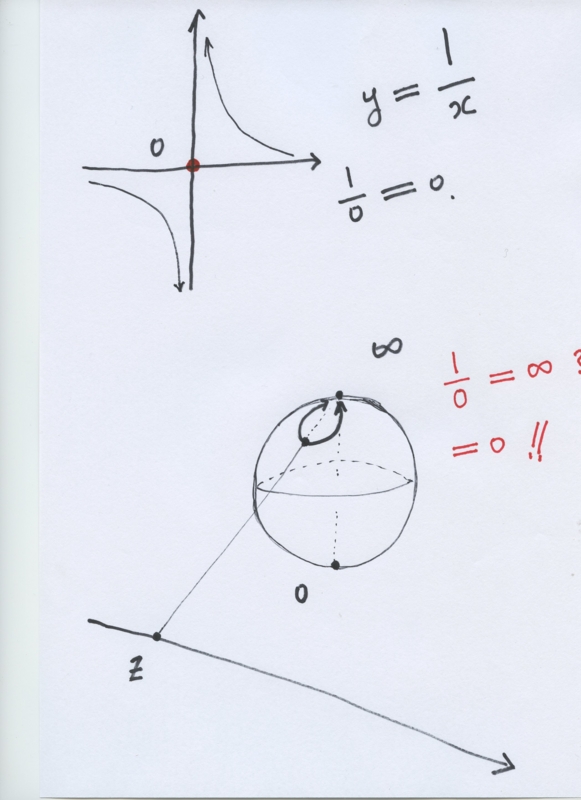
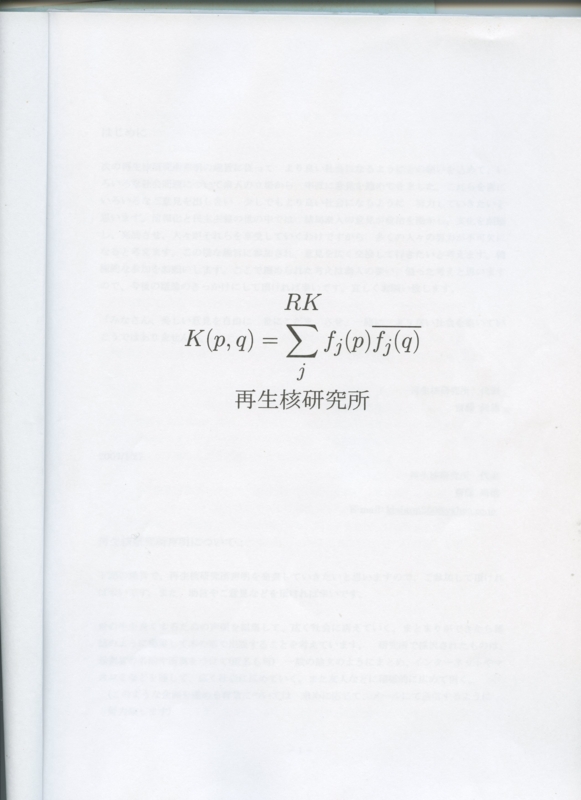
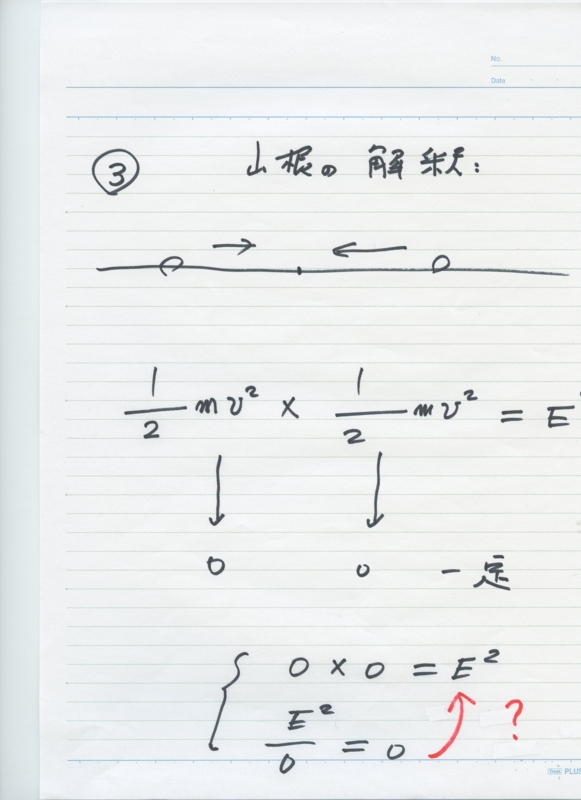
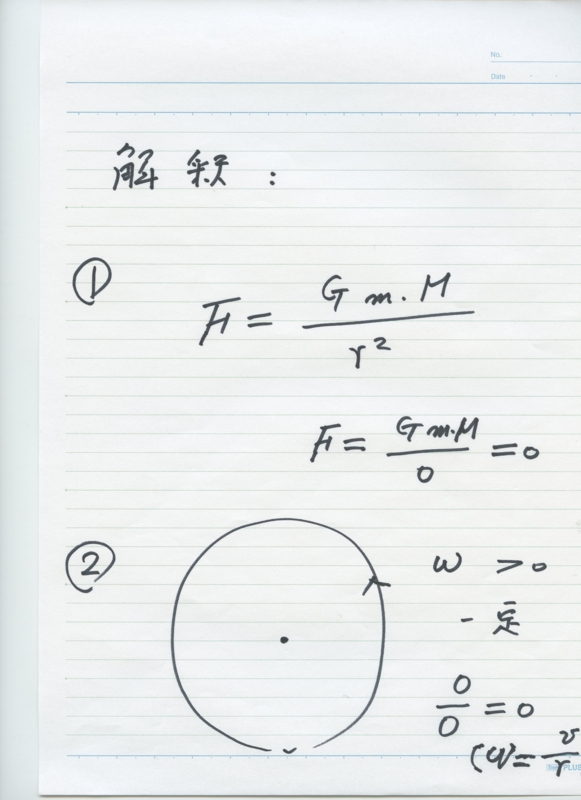
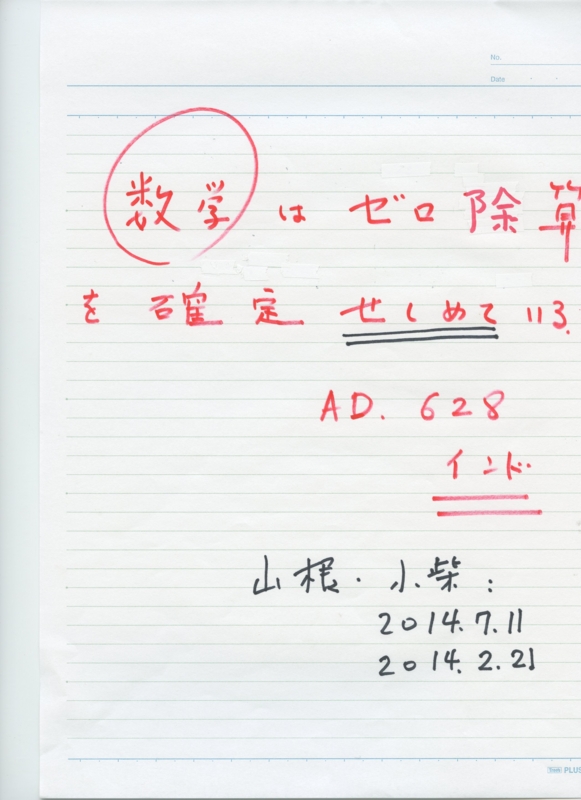
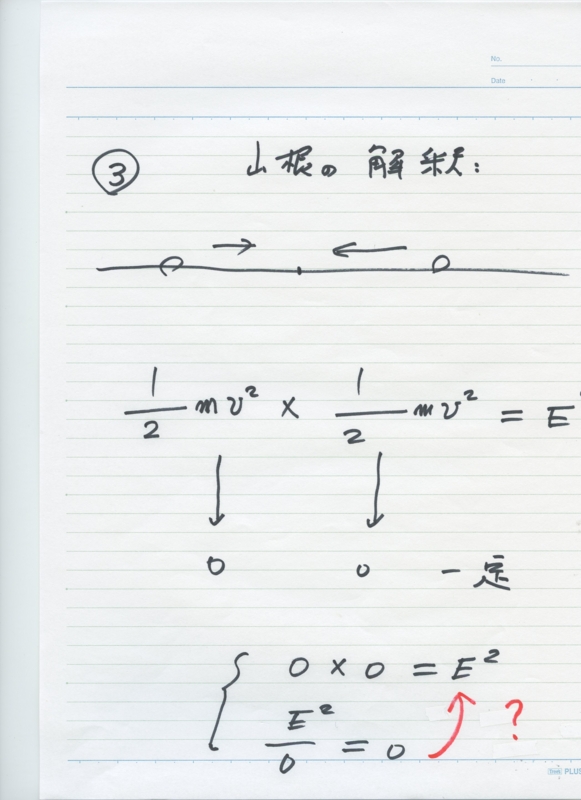

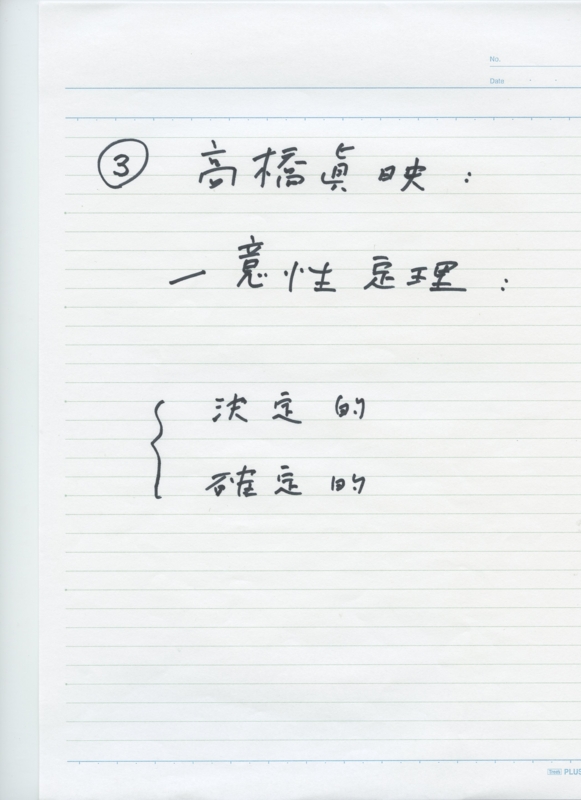

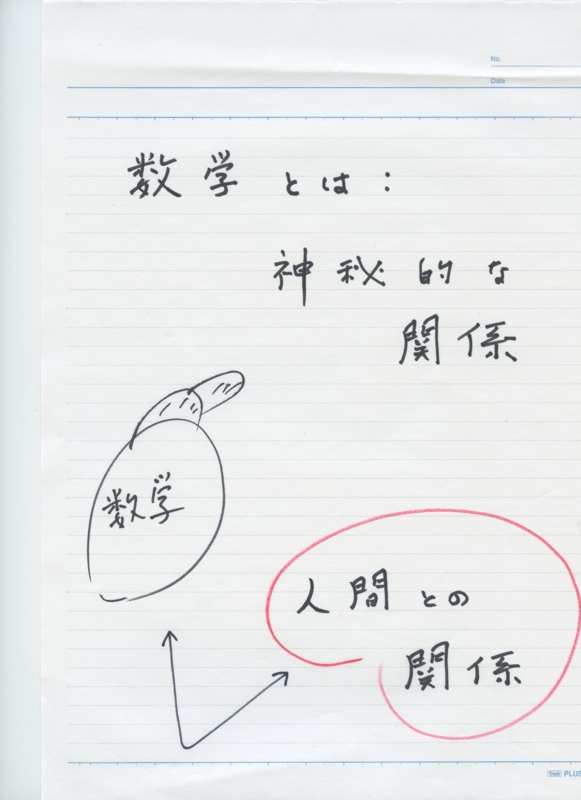
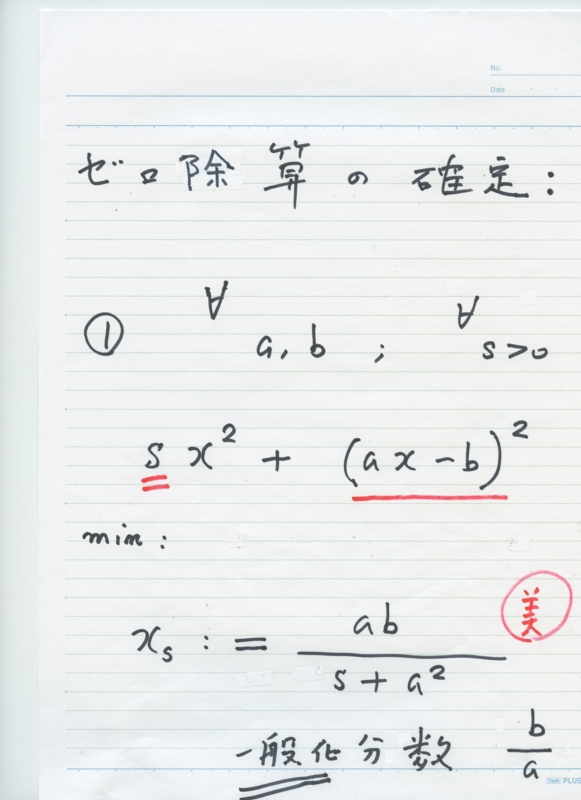
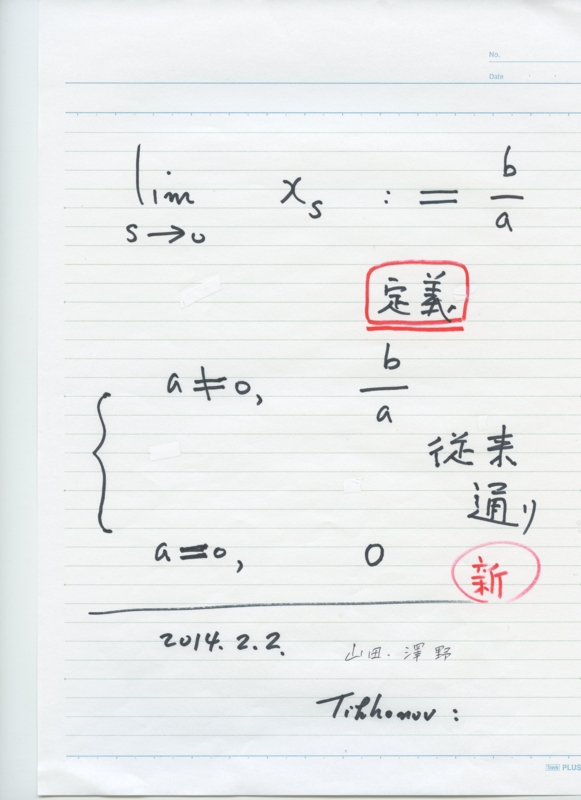
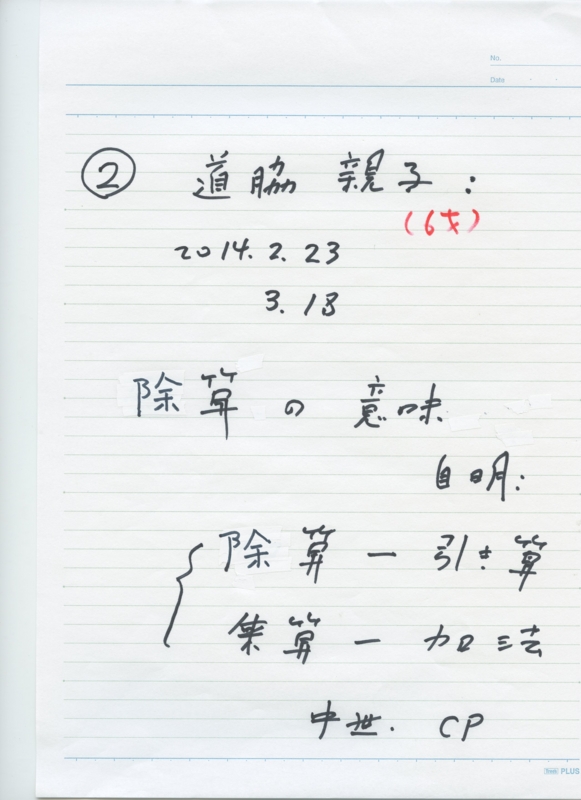
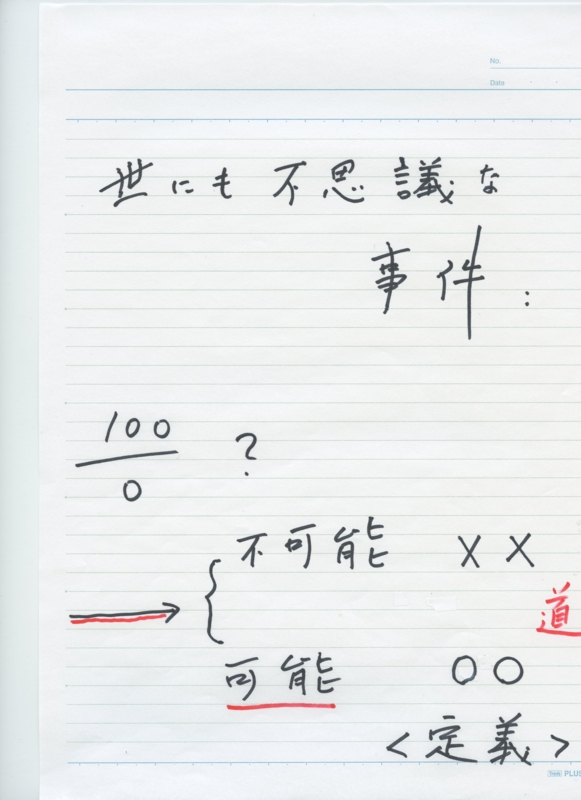



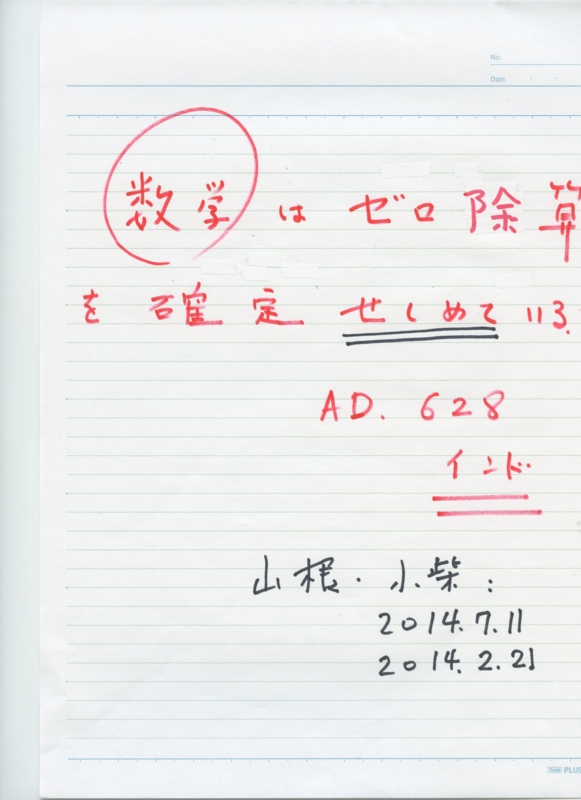
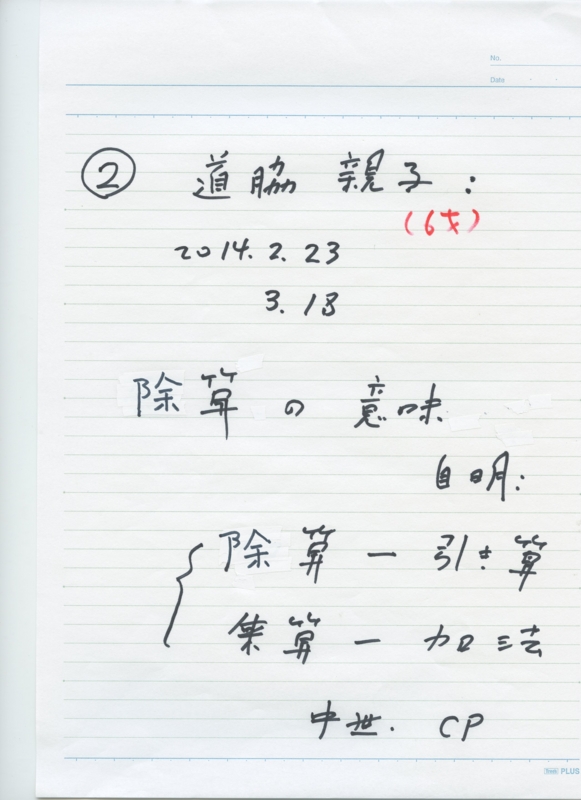

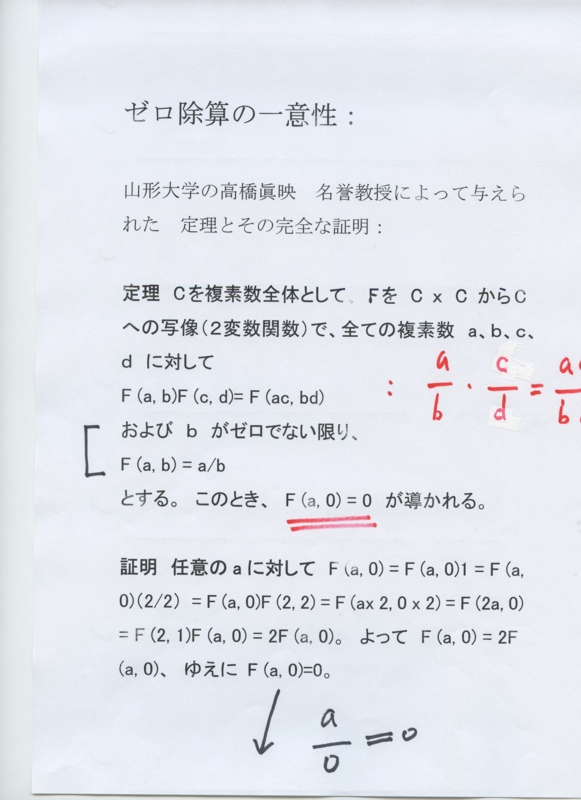


0 件のコメント:
コメントを投稿